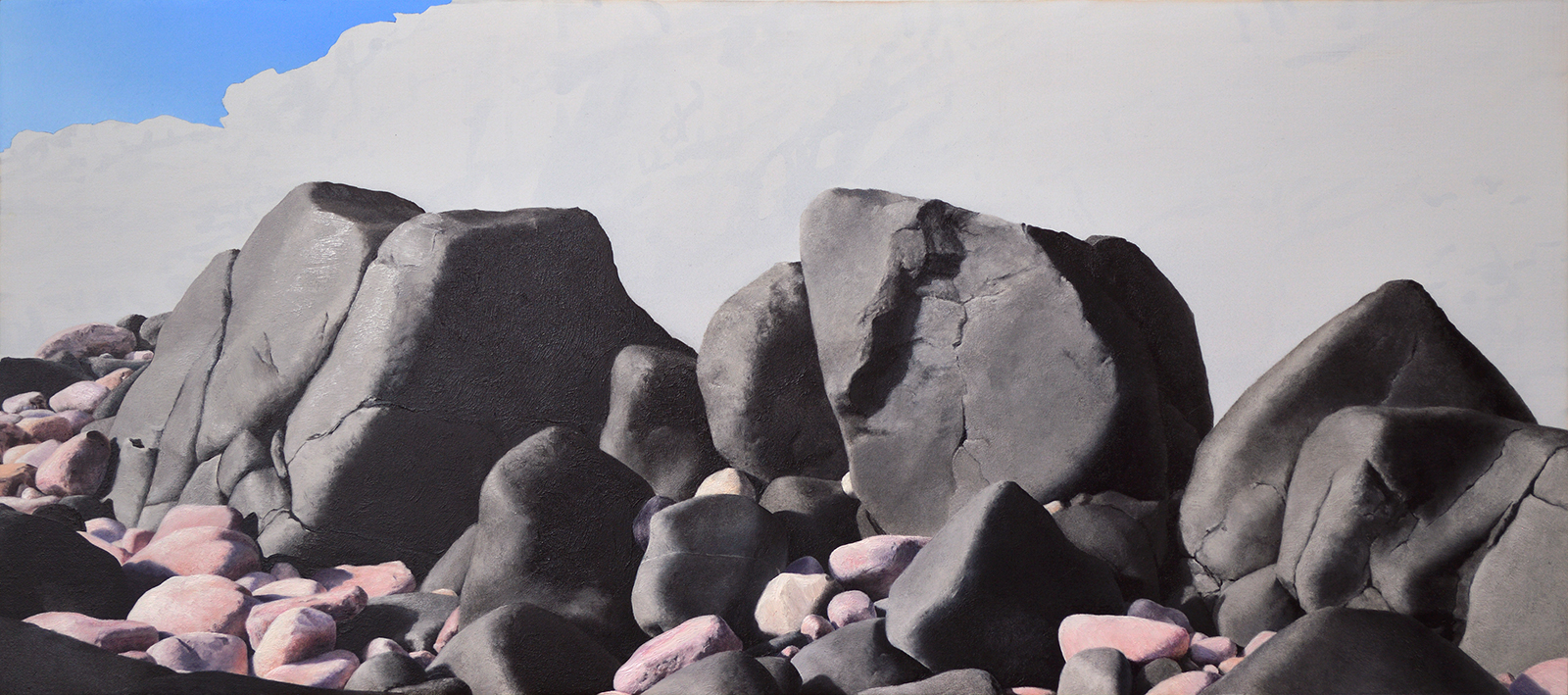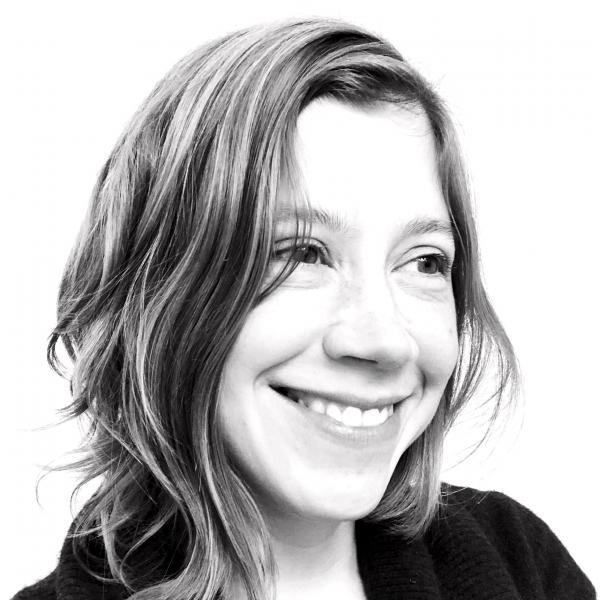About the Artist
Lillian Hoover earned her BFA from the University of North Carolina, Asheville and her MFA from Maryland Institute College of Art. Her paintings are included in several public collections including Baltimore Museum of Art, Weatherspoon Art Museum, and DC Commission on Arts and Humanities. In 2020, Hoover received a Pollock-Krasner Grant. Other honors include the Bethesda Urban Partnership’s Trawick Award, two Individual Artist Awards from MD State Arts Council, numerous selections as semifinalist for Baltimore's Sondheim Prize, and a travel grant from Philadelphia’s Center for Emerging Visual Artists. She has been awarded fellowships to attend residencies at I-Park, Vermont Studio Center, Alfred and Trafford Klots International Program for Artists, Monson Arts Center, and Virginia Center for the Creative Arts. Recent solo exhibitions include Presence In Absence at Goya Contemporary (2021) and In This World at BlackRock Center for the Arts (2018). Her work has appeared twice in New American Paintings and was selected for the cover of the 69th issue.LILLIAN BAYLEY HOOVER website View Website LILLIAN BAYLEY HOOVER website View Gallery
Artist's Statement
These paintings begin as encounters in landscapes, particularly those marked by geological “deep time.” They bear witness to human interventions in the landscape, and to our interactions with the non-human world. Such interventions reify systems of control and speak to notions of access — specifically, who has access to nature. Portions of the picture plane seem to be torn away or excised, revealing flat passages of chromatic grays, blacks, and browns. These interruptions and barriers prevent the viewer from fully entering or navigating the space. Competing visual languages and surfaces reflect our experience of the land we inhabit, our interactions with what is considered "wild," and the varying degrees to which our encounters with nature are mediated. Given the rift between human and non-human worlds, how should we proceed? How might we live well within these disrupted spaces? Part meditation, part metaphor, part elegy, these landscapes explore the anxiety, despair, terror, and joy which characterize our shared precarity.Featured Work
Photos
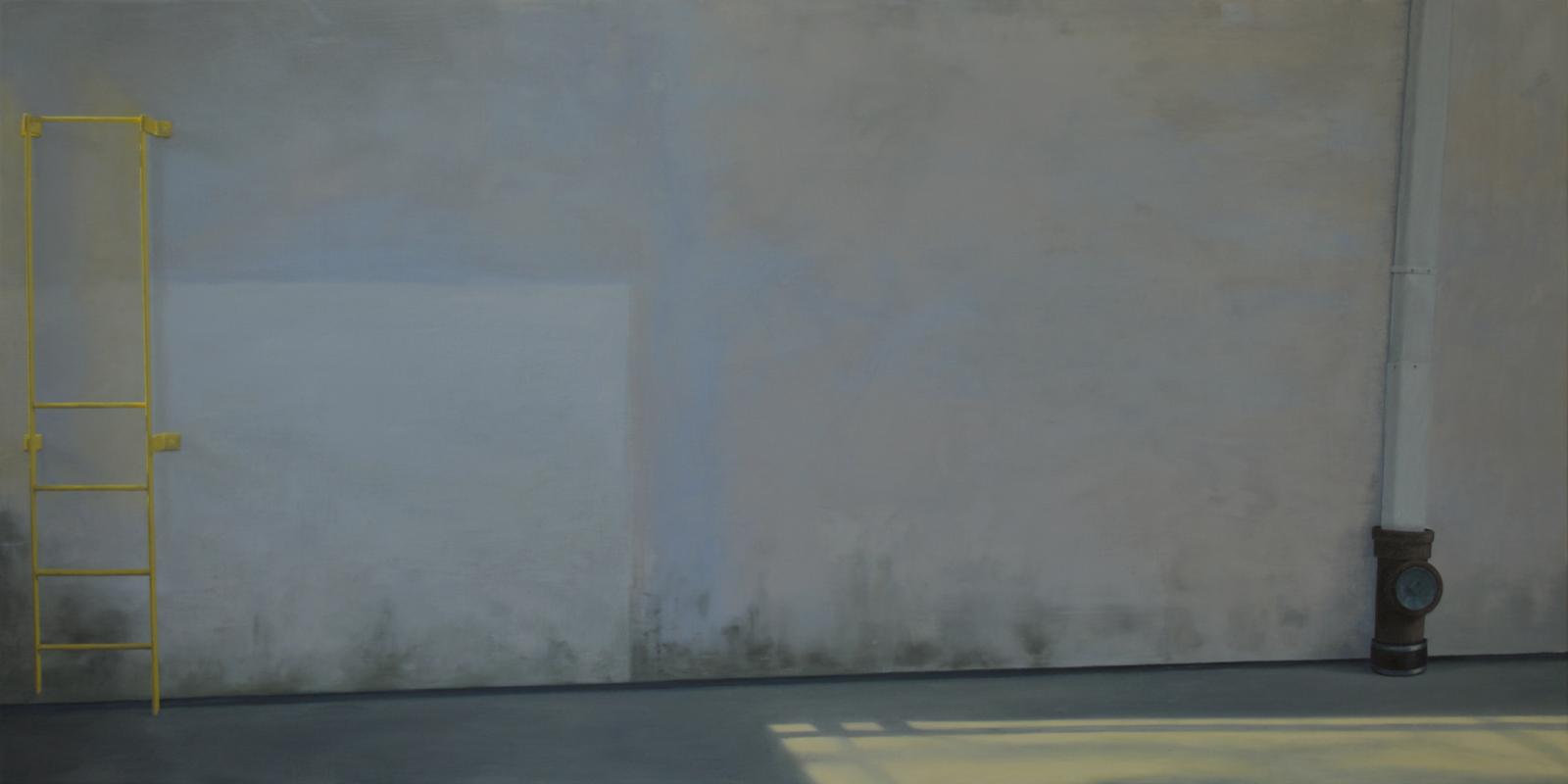
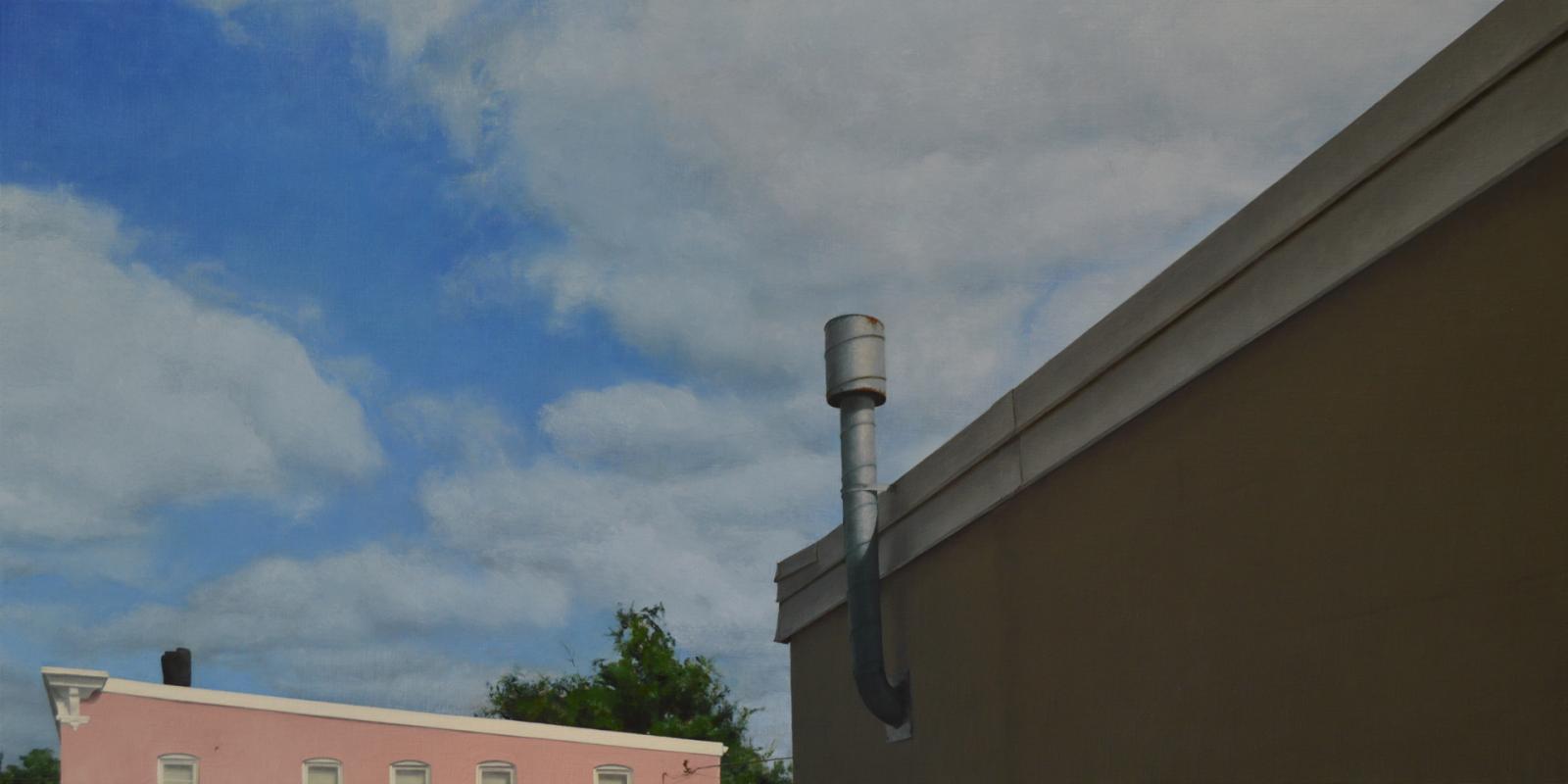
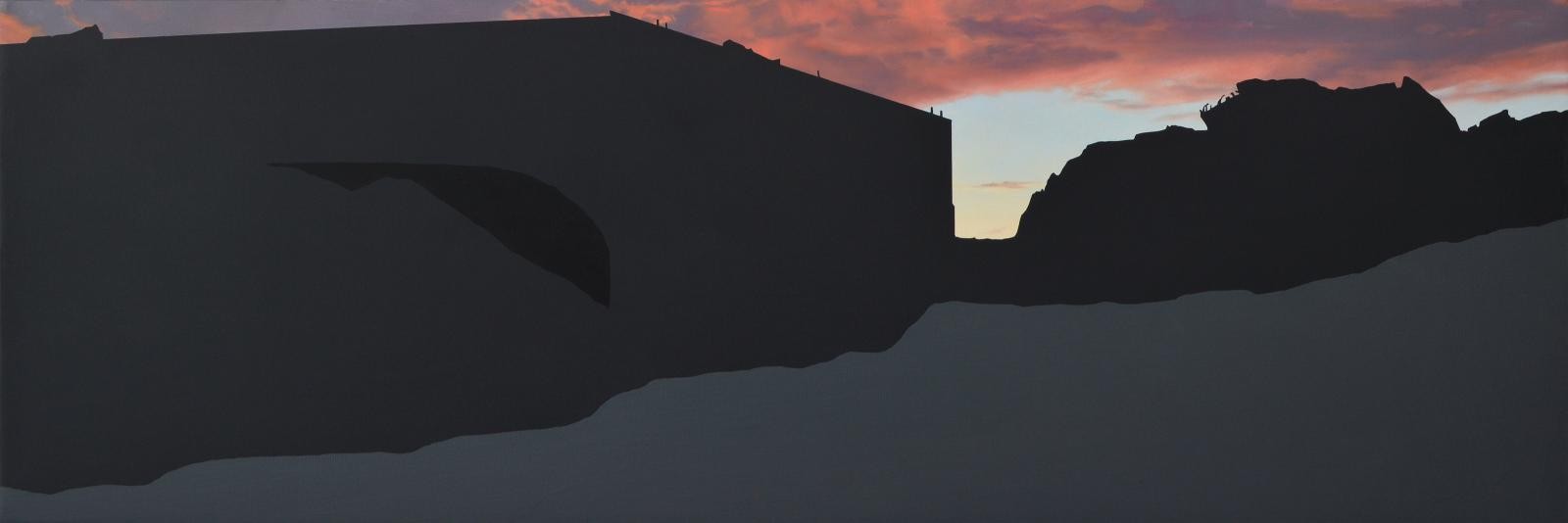
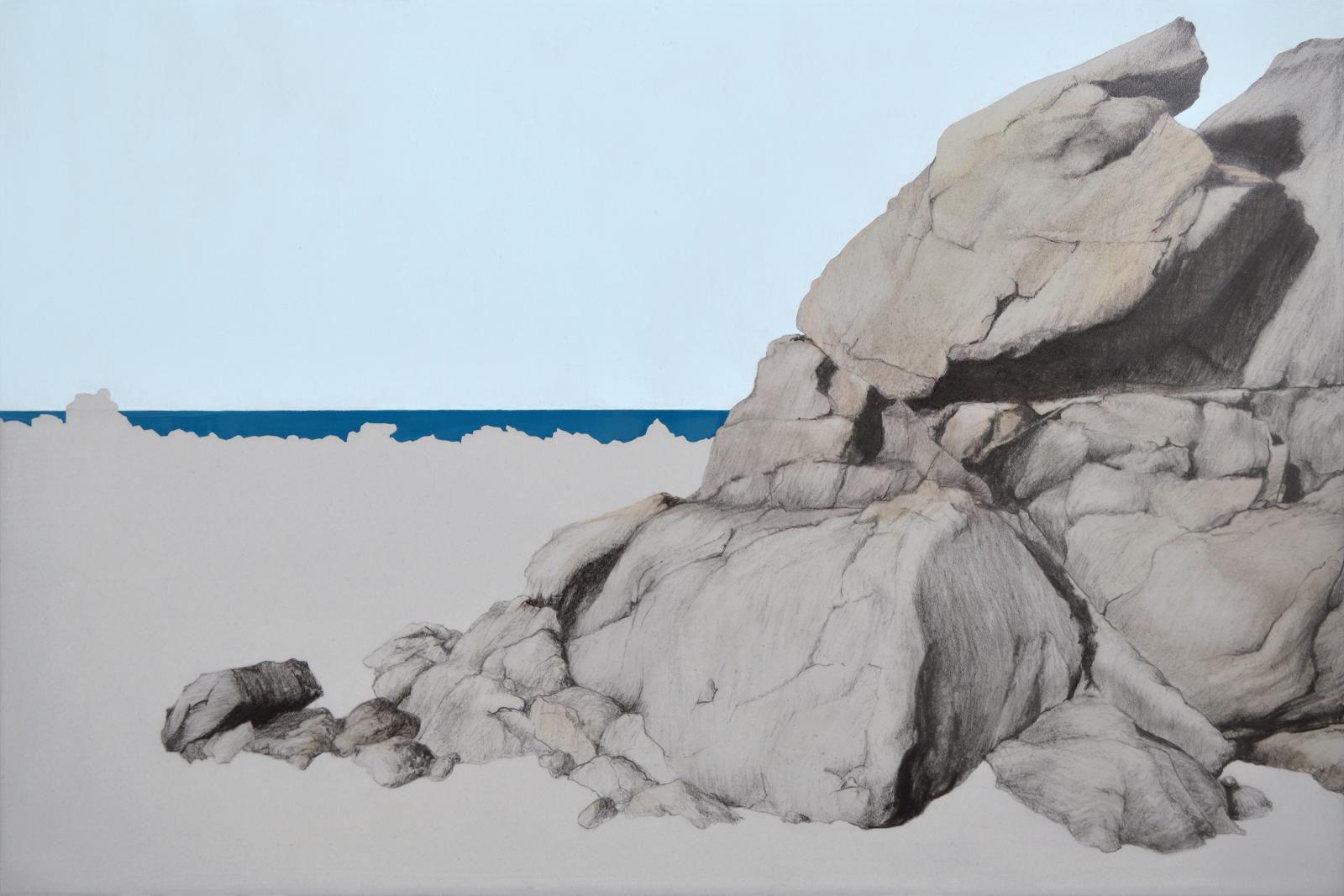
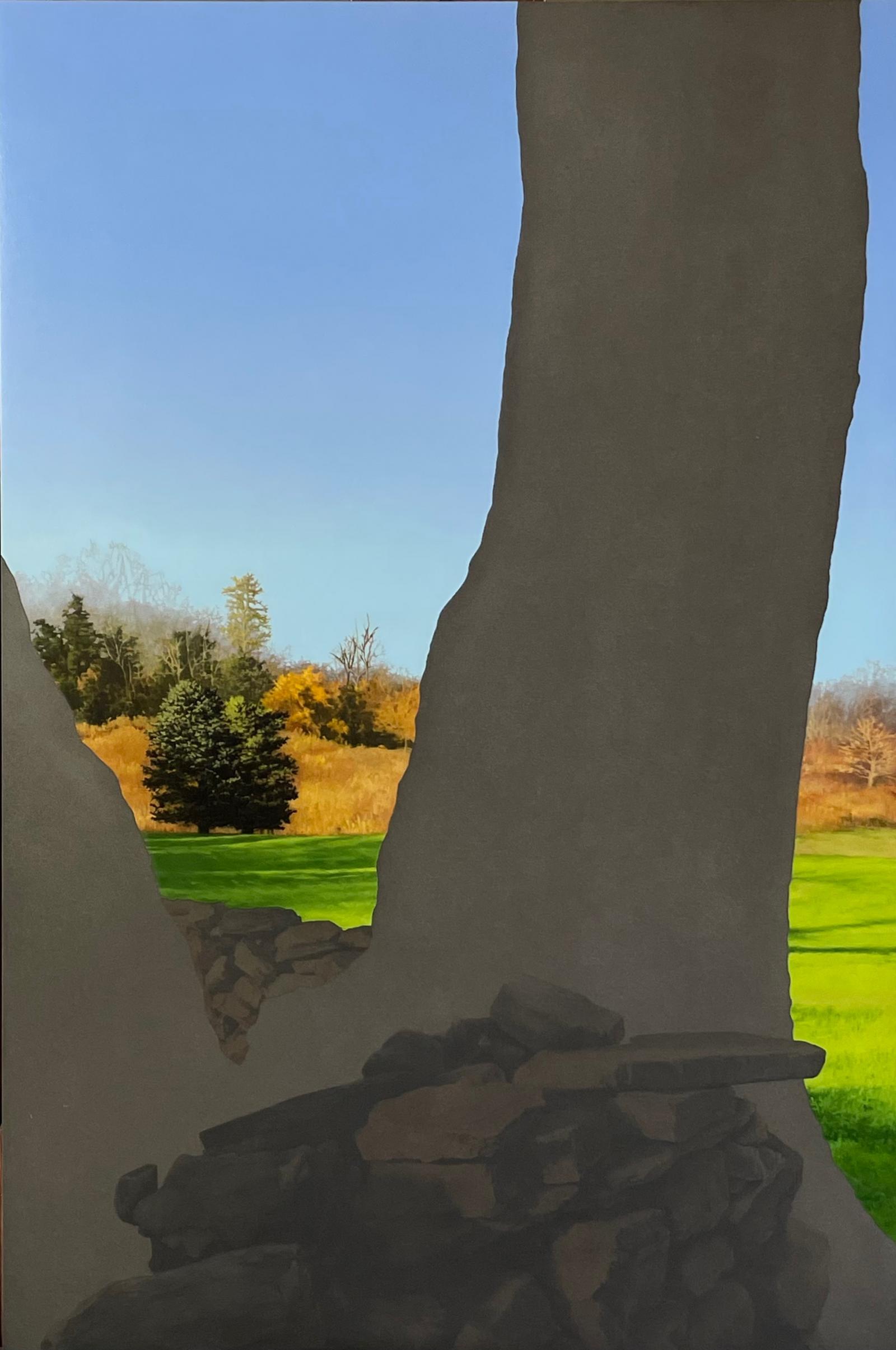
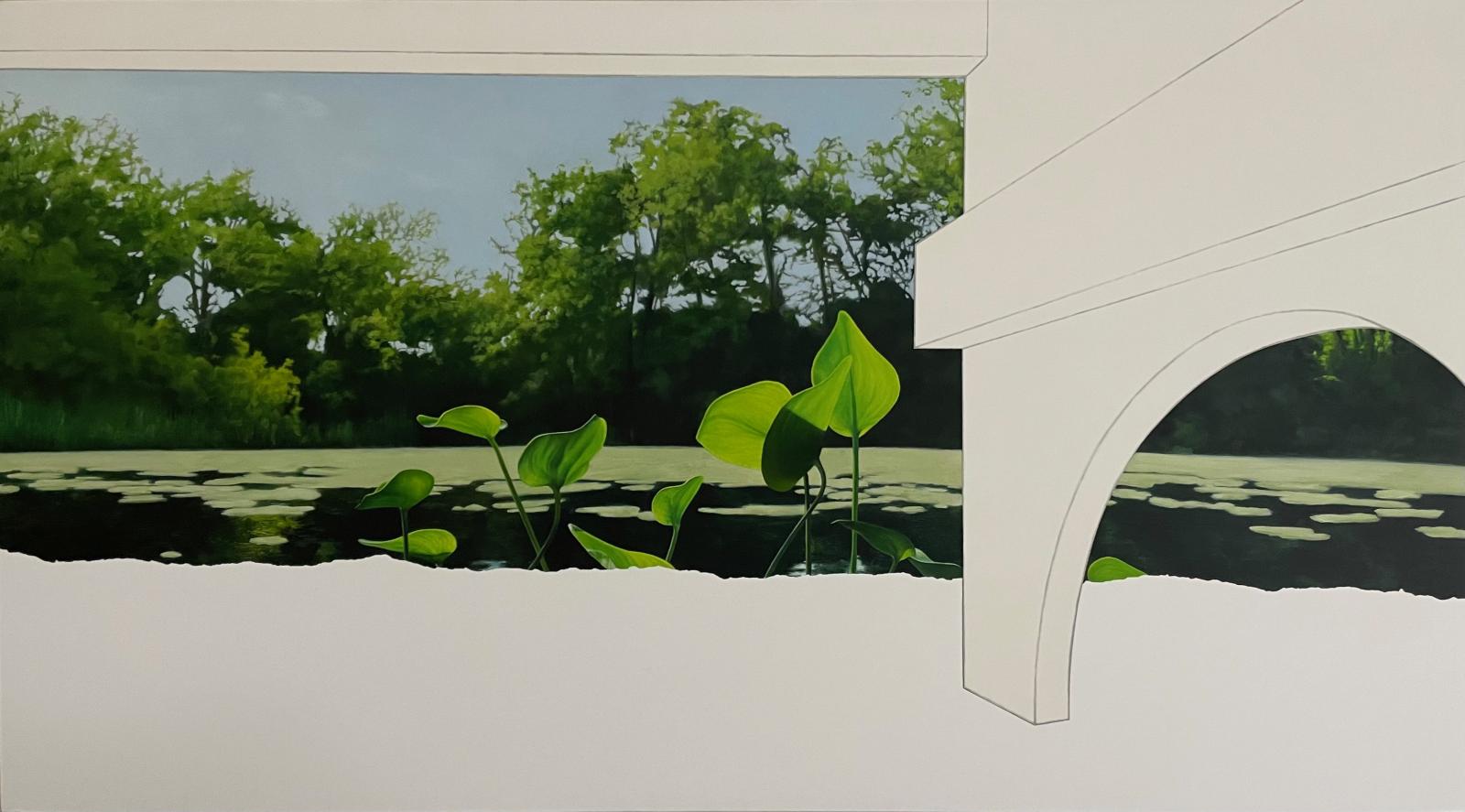
Featured Work: Photos
Ladder
oil on panel
2014
With this new body of work, my paintings continue to become simpler, quieter, more still, somewhat uneasy, always invested in the changing conditions of light. I am constantly delighted by the banal visual elements of specific life circumstances, which so often become more compelling than one might expect. In this spirit—as ordinary, imperfect materials are momentarily engaged in awkwardly arresting formal relationships—issues of abstraction continue to be present in these paintings. The liminal spaces I’ve chosen to explore here are comprised of patterns, textures, shapes, and shadows that appear to have arranged themselves with care, awaiting the viewer’s notice.
The subject matter in this series derives from encounters with my neighborhood while taking regular meditation walks, during which I observe the world. The paintings become a record of the daily forms with which I live. I've long felt that things become valuable to us as a result of the attention we pay to them; in some way, attention translates into appreciation. Consequently, the following observation by Frederick Franck resonated with me deeply when I came across it recently: "I have learnt that what I have not drawn, I have never really seen, and that when I start to draw an ordinary thing, I realize how extraordinary it is."
In my neighborhood, the border between a commercial storage space or industrial building and residential lot is permeable: side-by-side, these structures don't belong wholly to one world or the other. This work focuses on the awkward spaces that develop as a result. These paintings also depict many literal barriers: walls, fences, oscillated strand board, bridges, industrial doorways. I'm interested in what happens at the interface between public and private, between a space to which we are granted access and a space to which we are not granted access.
Geometry infuses these paintings, and to some extent I envision this geometry as evidence of human endeavor—so often overruled or undermined by the passing of time and the inevitability of subsequent actions and events. Fascinating irregularities of form and inconsistencies of logic thus emerge.
As in previous work, I continue to be drawn to very banal and awkward subject matter—none of these places is special. What interests me is the way in which something becomes special through sustained attention. In these forgettable, unprepossessing details, I find quietude. The quietude that accompanies these empty places and "wrong" bits isn't insecure, fearful, or nostalgic. Rather than an indictment, the acknowledgement of these awkward moments becomes about present-ness and the joy of looking. This quietude is comfortable with awkwardness, appreciative and mindful of the fleeting moment. These paintings aren’t hopeful, nor waiting or longing. While these spaces do wear their history, they don’t ruminate over what was or look forward to the future, but instead murmur “this is what is.”
Firehouse
oil on panel
2015
With this new body of work, my paintings continue to become simpler, quieter, more still, somewhat uneasy, always invested in the changing conditions of light. I am constantly delighted by the banal visual elements of specific life circumstances, which so often become more compelling than one might expect. In this spirit—as ordinary, imperfect materials are momentarily engaged in awkwardly arresting formal relationships—issues of abstraction continue to be present in these paintings. The liminal spaces I’ve chosen to explore here are comprised of patterns, textures, shapes, and shadows that appear to have arranged themselves with care, awaiting the viewer’s notice.
The subject matter in this series derives from encounters with my neighborhood while taking regular meditation walks, during which I observe the world. The paintings become a record of the daily forms with which I live. I've long felt that things become valuable to us as a result of the attention we pay to them; in some way, attention translates into appreciation. Consequently, the following observation by Frederick Franck resonated with me deeply when I came across it recently: "I have learnt that what I have not drawn, I have never really seen, and that when I start to draw an ordinary thing, I realize how extraordinary it is."
In my neighborhood, the border between a commercial storage space or industrial building and residential lot is permeable: side-by-side, these structures don't belong wholly to one world or the other. This work focuses on the awkward spaces that develop as a result. These paintings also depict many literal barriers: walls, fences, oscillated strand board, bridges, industrial doorways. I'm interested in what happens at the interface between public and private, between a space to which we are granted access and a space to which we are not granted access.
Geometry infuses these paintings, and to some extent I envision this geometry as evidence of human endeavor—so often overruled or undermined by the passing of time and the inevitability of subsequent actions and events. Fascinating irregularities of form and inconsistencies of logic thus emerge.
As in previous work, I continue to be drawn to very banal and awkward subject matter—none of these places is special. What interests me is the way in which something becomes special through sustained attention. In these forgettable, unprepossessing details, I find quietude. The quietude that accompanies these empty places and "wrong" bits isn't insecure, fearful, or nostalgic. Rather than an indictment, the acknowledgement of these awkward moments becomes about present-ness and the joy of looking. This quietude is comfortable with awkwardness, appreciative and mindful of the fleeting moment. These paintings aren’t hopeful, nor waiting or longing. While these spaces do wear their history, they don’t ruminate over what was or look forward to the future, but instead murmur “this is what is.”
untitled (Herring Run)
oil on Dibond
2019
In these paintings, portions of the picture plane seem to be torn away or excised. Flat passages of chromatic grays and browns are revealed, interrupting the landscapes and acting as barriers to prevent the viewer from fully entering or easily navigating the space. Competing visual languages reflect our experience of the spaces we inhabit, our interactions with what is considered "wild," and the varying degrees to which our encounters with “nature” are mediated. Given the rift between the human and non-human world, how should we proceed and how might we live well within these disrupted spaces? Part meditation, part metaphor, part elegy, these landscapes explore the anxiety, despair, terror, and joy which characterize our shared precarity.
untitled (Cap Fréhel)
oil and graphite on Dibond
2019
In these paintings, portions of the picture plane seem to be torn away or excised. Flat passages of chromatic grays and browns are revealed, interrupting the landscapes and acting as barriers to prevent the viewer from fully entering or easily navigating the space. Competing visual languages reflect our experience of the spaces we inhabit, our interactions with what is considered "wild," and the varying degrees to which our encounters with “nature” are mediated. Given the rift between the human and non-human world, how should we proceed and how might we live well within these disrupted spaces? Part meditation, part metaphor, part elegy, these landscapes explore the anxiety, despair, terror, and joy which characterize our shared precarity.
we will not know how long they will last
oil and pastel pencil on Dibond
2022
These paintings begin as encounters in landscapes, particularly those marked by
geological “deep time.” They bear witness to human interventions in the landscape, and
to our interactions with the non-human world. Such interventions reify systems of control
and speak to notions of access — specifically, who has access to nature. Portions of the
picture plane seem to be torn away or excised, revealing flat passages of chromatic
grays, blacks, and browns. These interruptions and barriers prevent the viewer from
fully entering or navigating the space. Competing visual languages and surfaces reflect
our experience of the land we inhabit, our interactions with what is considered "wild,"
and the varying degrees to which our encounters with nature are mediated. Given the
rift between human and non-human worlds, how should we proceed? How might we live
well within these disrupted spaces? Part meditation, part metaphor, part elegy, these
landscapes explore the anxiety, despair, terror, and joy which characterize our shared
precarity.
we possess only this moment
oil and pastel pencil on Dibond
2022
These paintings begin as encounters in landscapes, particularly those marked by
geological “deep time.” They bear witness to human interventions in the landscape, and
to our interactions with the non-human world. Such interventions reify systems of control
and speak to notions of access — specifically, who has access to nature. Portions of the
picture plane seem to be torn away or excised, revealing flat passages of chromatic
grays, blacks, and browns. These interruptions and barriers prevent the viewer from
fully entering or navigating the space. Competing visual languages and surfaces reflect
our experience of the land we inhabit, our interactions with what is considered "wild,"
and the varying degrees to which our encounters with nature are mediated. Given the
rift between human and non-human worlds, how should we proceed? How might we live
well within these disrupted spaces? Part meditation, part metaphor, part elegy, these
landscapes explore the anxiety, despair, terror, and joy which characterize our shared
precarity.
